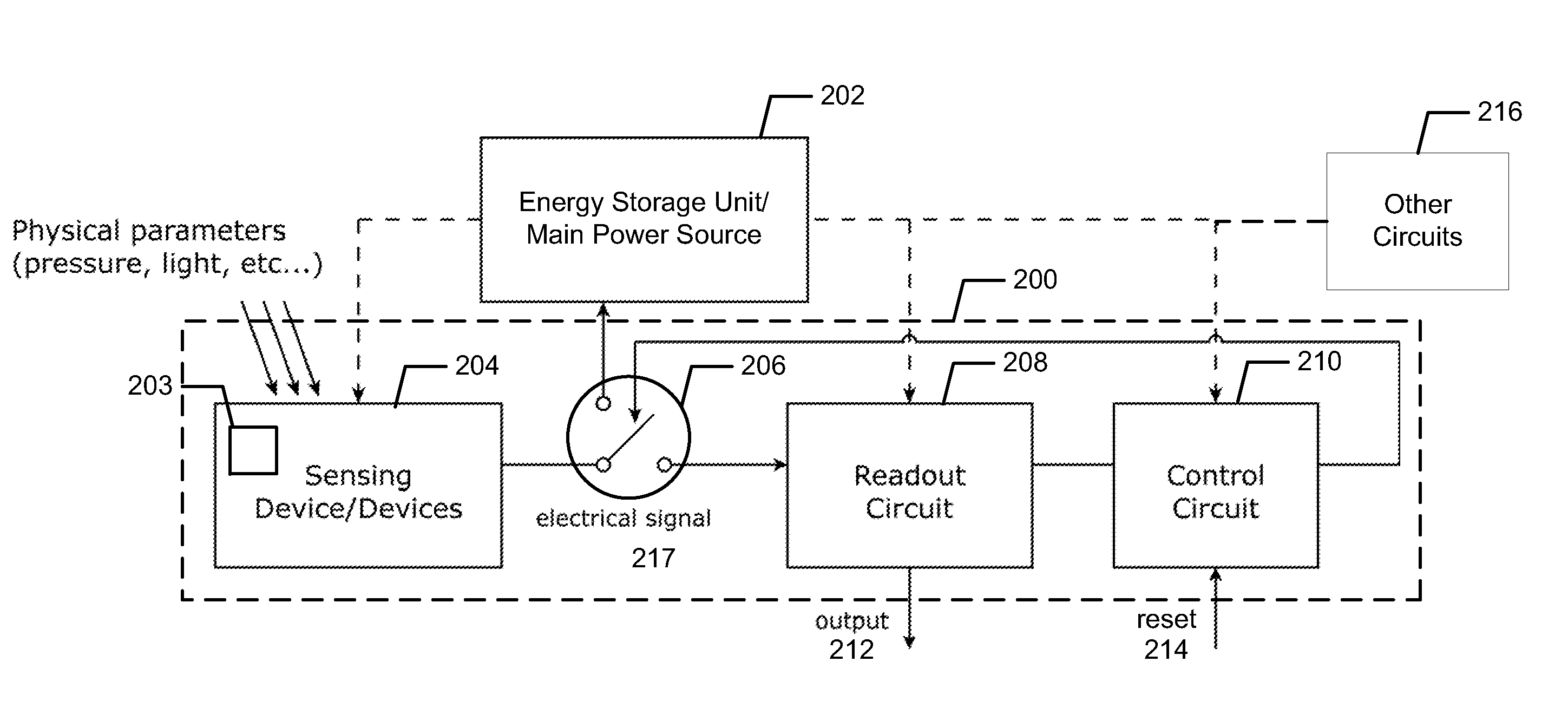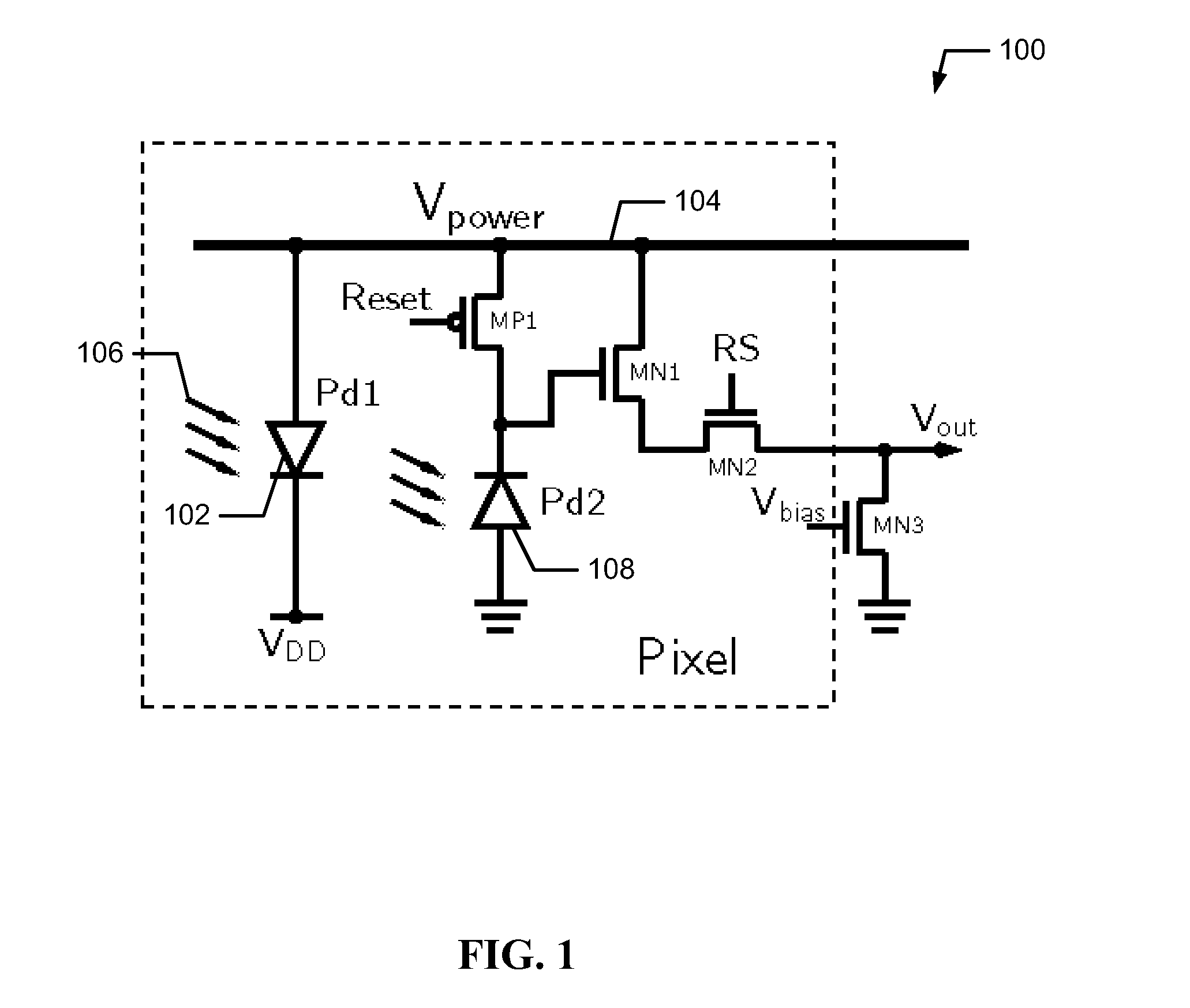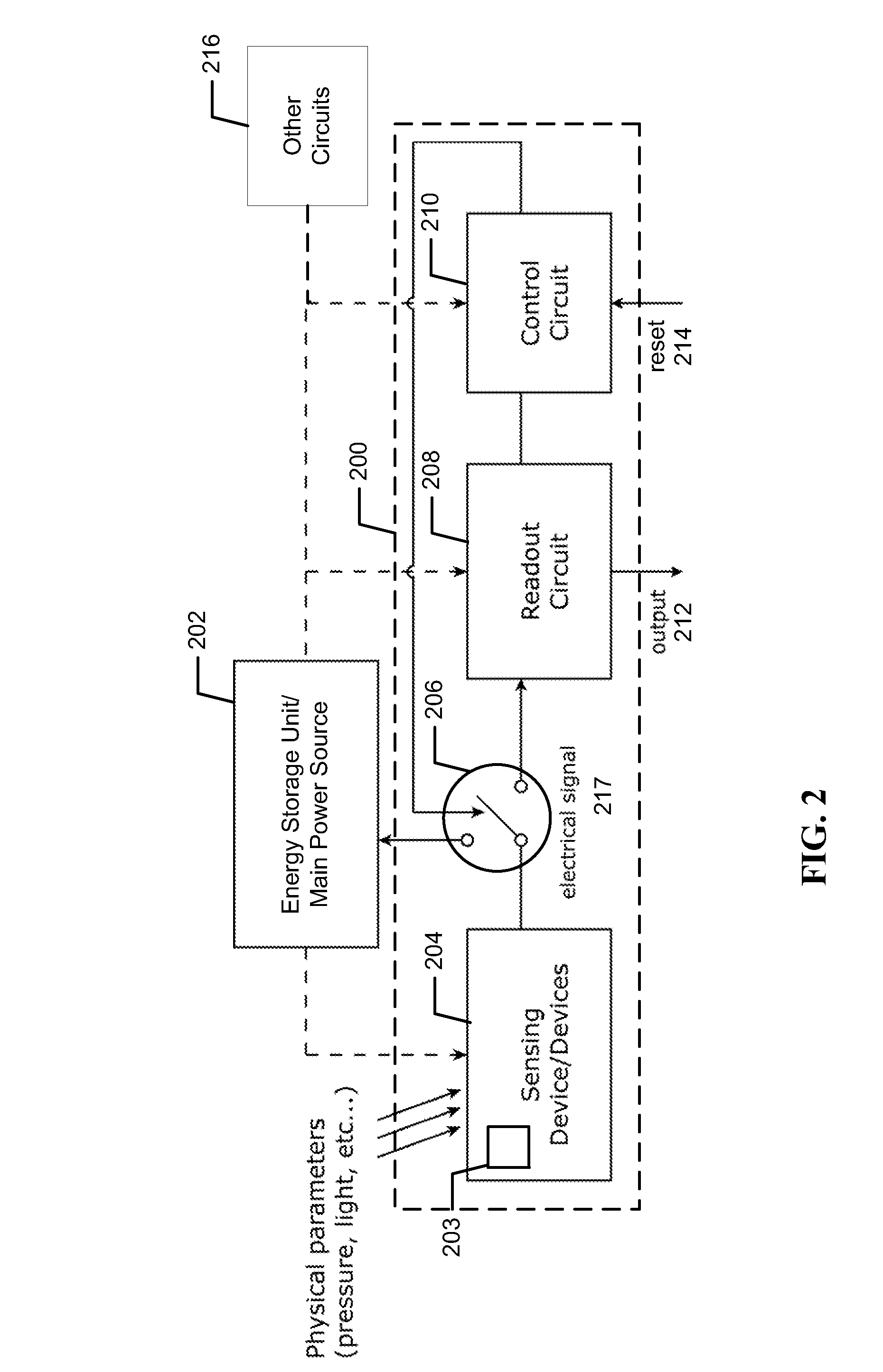Method and apparatus for energy harvesting using CMOS sensor
a technology of cmos sensor and energy harvesting, applied in the field of electromechanical sensors, can solve the problems of large power consumption limitation of portable/mobile systems, long operational time of devices without human intervention for energy replenishment, and undesirable human intervention, and achieve the effect of reducing the power consumed from a conventional power supply
- Summary
- Abstract
- Description
- Claims
- Application Information
AI Technical Summary
Benefits of technology
Problems solved by technology
Method used
Image
Examples
Embodiment Construction
[0022]Now turning to the drawings and referring to FIG. 2, a block diagram is shown therein for illustrating the general structure of circuit 200 for harvesting energy from one or more sensing device 204. The circuit 200, which includes at least one sensing unit 203, can be switched between a sensing mode and a energy harvesting mode. In the sensing mode, the sensing unit 203 converts certain physical parameters or environmental characteristics such as light intensity, pressure, force, acceleration, into output signal 212 which is then readout and digitized. In the energy harvesting mode, the sensing unit 203 is connected to the energy storage unit or main power source 202 to contribute to the power supply, which is used to power various components of the circuit 200 or other external circuit 216.
[0023]As further depicted in FIG. 2, the sensing unit 200 further includes switch 206 for selecting the sensing mode and the energy harvesting mode, a readout circuit 208 for reading and en...
PUM
 Login to View More
Login to View More Abstract
Description
Claims
Application Information
 Login to View More
Login to View More - R&D
- Intellectual Property
- Life Sciences
- Materials
- Tech Scout
- Unparalleled Data Quality
- Higher Quality Content
- 60% Fewer Hallucinations
Browse by: Latest US Patents, China's latest patents, Technical Efficacy Thesaurus, Application Domain, Technology Topic, Popular Technical Reports.
© 2025 PatSnap. All rights reserved.Legal|Privacy policy|Modern Slavery Act Transparency Statement|Sitemap|About US| Contact US: help@patsnap.com



